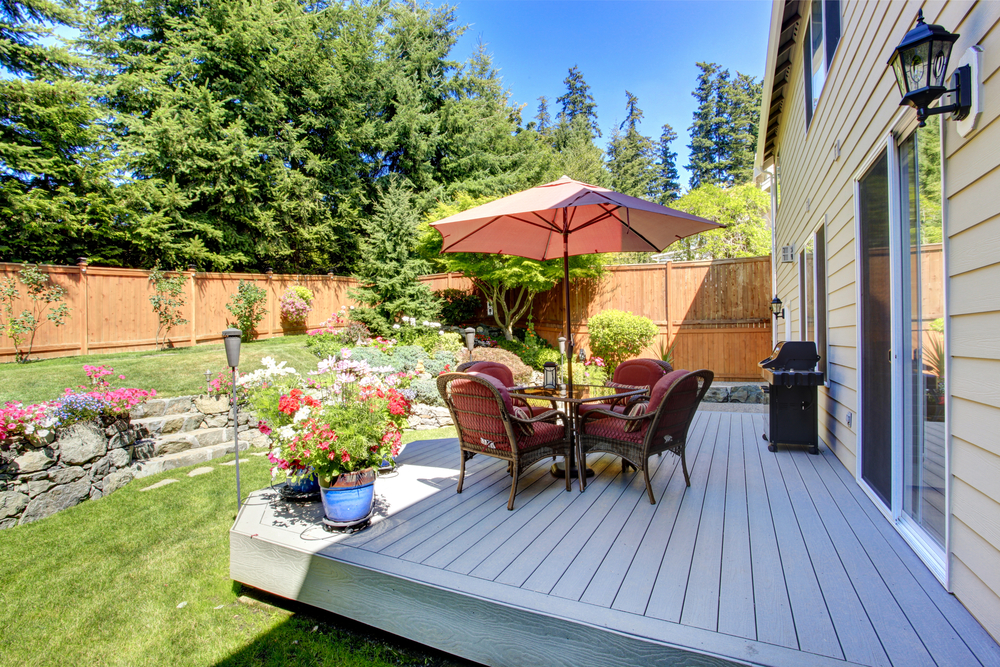Outdoor space has shot up the priority list for buyers, especially since the pandemic gave everyone a crash course in why fresh air matters. Whether it’s for kids, pets, pottering around with plants, or simply catching some sun, a garden can make or break how you feel in a home.
But it’s not just about square footage. Sunlight, privacy, condition, and even where the garden sits in relation to the house can have a big say in how usable—and valuable—it is.
Here’s what to check before you fall for a house with a wildflower patch and a wobbly fence.
1. Garden Orientation and Sunlight
You’ll hear estate agents mention “south-facing” like it’s a golden ticket. And for good reason. Gardens that face south tend to soak up the most sunlight from morning until evening. That means:
- Warmer temperatures, even in cooler months
- Ideal conditions for growing vegetables or plants
- More comfortable spaces for relaxing and entertaining
North-facing gardens often stay cooler and more shaded, especially close to the house. If you like to garden or want sun most of the day, pay close attention to which direction the garden faces—and what might block that light (like next-door’s giant shed).
2. Garden Access and Privacy
Think about how you’ll actually use the garden. Is there easy access from the kitchen? If you’ve got a terraced house, is there a secure route around the back for bins or garden tools?
Privacy also plays a role. It’s hard to enjoy a garden if you’re constantly on display. Look out for tall fences or natural screening, trees or shrubs that block lines of sight from nearby windows and smart garden layouts that separate lounging zones from overlooked spots.
3. Property Boundaries and Fences

Fences and borders matter—not just for keeping pets in and neighbours out, but also legally.
Always check:
- Who’s responsible for each boundary (your solicitor can confirm this)
- If fences or walls are in poor condition, they’re not cheap to replace
- Whether the garden layout clearly matches what’s shown on the deeds
In cities like Indianapolis, where property lines can get a bit tangled and yards vary in layout, boundary issues can delay sales or cause disputes. If you’re selling or buying with speed in mind, working with local cash home buyers like Doctor Homes Indianapolis can simplify the process. They’re used to handling tricky garden and lot line situations without fuss.
4. Garden Inspection Tips for Buyers
Don’t be shy—poke around a bit during the viewing. Gardens can hide all sorts of issues.
Here’s what to look for:
- Patches of standing water or soggy grass could mean drainage problems
- Cracked patios or uneven ground—tree roots may be at play
- Weeds gone wild or clearly neglected corners—fixing this takes time and money
Also, give raised beds or planting zones a once-over. Healthy soil is key to growing success. If the garden’s been used and loved, chances are the soil has been improved over time with compost or organic matter.
5. High-Maintenance Gardens
Not everyone wants to spend Sundays pruning hedges or skimming pond algae. A garden that looks like something from a magazine might take more work than it’s worth.
Watch out for issues such as intricate landscaping with lots of edging and stonework. Water features or ponds (kids and pets, take note) and dense planting schemes with no clear paths
Be honest—are you up for digging and pruning, or would you rather kick back with a drink on the lawn?
6. Problematic Garden Plants and Trees
Some greenery causes more harm than good. Japanese knotweed is notoriously destructive—it’s known to cause structural damage and can even derail mortgage deals.
Other issues to check for:
- Large trees planted close to the house (roots may already be exploring)
- Ivy or climbing plants on walls can trap moisture and weaken brickwork
- Fast-growing hedges that need frequent trimming
A garden shouldn’t come with a weekly battle plan.
7. Structural Damage from Trees
Trees can be lovely, but they don’t always play nice, especially if they’re planted in inappropriate locations. Look for warning signs such as visible cracks in patios or driveways, fences being nudged over by large trees or roots pushing up paving stones.
If you’re worried, a tree specialist (arborist) can assess risks. Lenders might also ask for a tree survey if anything looks suspicious.
8. Garden Features That Add Value
Thankfully, not all garden features are headaches—some make a home more liveable and desirable.
Some particular aspects of gardens that both buyers and renters tend to appreciate include:
- Patios or decking for socialising
- Outdoor lighting or heating setups
- Garden rooms, studios, or home offices
9. Outdoor Storage Solutions
A good garden needs storage—whether it’s for bikes, tools, or just somewhere to throw the barbecue in winter. It’s especially beneficial in for smaller homes or those without garages.
Keep in mind though, that sheds or garden buildings may need planning permission, especially if large, so make sure it has been built with permission. Don’t assume “shed included” means “shed in working order.” A shed with issues such as wood rot or leaky roofs can make storage worse, not better.
Sheds made from metal are low-maintenance, but can get hot inside in summer, so might not be suitable if you want to use a shed as a craft room or workshop.
Conclusion
A great garden can lift a home from average to outstanding—but only if it suits your life and lifestyle. Don’t treat outdoor space as a bonus. Treat it like another room, with all the same scrutiny.
Look past the lawn ornaments and blooming roses. Think about access, privacy, upkeep, and whether the space will work for you year-round.
0
Related
Read the full article here


